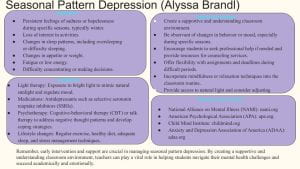As we went into the bullying module this week, the documentary “Bully” and the articles provided valuable insights into the issue of bullying and its impact on kids. Reflecting on these resources, I’m going to address the questions posed, while also including my broader understanding of the module’s content.
One striking moment from “Bully” was the portrayal of Alex, a young boy who faced relentless bullying on his school bus. The raw emotion I watched in his story filled me with sadness. Witnessing Alex’s pain and isolation highlighted the important need for intervention and support systems within our schools. His story serves as a powerful reminder of the real life consequences of unchecked bullying behavior.
Additionally, the article “Social-Emotional Learning Helps Prevent Bullying” emphasized the importance of equipping students with the necessary skills to navigate social dynamics and conflicts effectively. This resonated with me because it underscores the proactive approach needed to address bullying. By using emotional intelligence and empathy through social-emotional learning programs, we can empower students to encourage healthier relationships and step in when witnessing bullying behavior.
Furthermore, “10 Ways to be an Upstander” provided practical strategies for bystanders to actively step in and support victims of bullying. One particular suggestion that stood out to me was the importance of offering support privately. This emphasizes the need for sensitivity and confidentiality when reaching out to victims, as public confrontation may increase their distress.
Moving forward, these films and articles will add to my work with students by shaping my approach to prevention and intervention strategies. Specifically, I plan to integrate social-emotional learning methods into my lesson plans, prioritizing empathy, conflict resolution, and bystander intervention skills. I aim to create safe and inclusive space where students feel empowered to speak up and seek support when faced with bullying situations.
As an additional source, I found an insightful article from Education Week titled “The Lasting Impact of Bullying on Mental Health.” The article explores the long-term consequences of bullying on students mental well being. This source further reinforces the importance of addressing bullying comprehensively and highlights the urgency of our work in promoting positive school climates.
In conclusion, the bullying module has deepened my understanding of the challenges surrounding bullying and the critical role educators play in fostering safe and supportive environments for all students. By integrating the lessons learned from “Bully” and the accompanying articles, I am committed to advocating for proactive measures that prioritize the well being and dignity of everyone of my students.
References:
Eyman, W. & Cohen, J. (2009). 10 ways to be an upstander. BullyBust: Creating a Community of Upstanders(TM), the nationwide bully prevention/pro-upstander campaign from the National School Climate Center (NSCC). www.BullyBust.org. LinkLinks to an external site.
Framing bullying for educators (n.d.). The Bully Project. LinkLinks to an external site.
Hirsch, L. (Director) (2012). Bully. Cinereach.
Ragozzino, K. & O’Brien, M.U. (2009). Social and Emotional Learning and Bullying Prevention. Prepared for the National Center for Mental Health Promotion and Youth Violence Prevention by the Collaborative for Academic, Social, and Emotional Learning (CASEL) and the Social and Emotional Learning Research Group at the University of Illinois at Chicago. LinkLinks to an external site.
Stopbullying.gov Ed Board. (2020, March 26). Social emotional learning helps prevent bullying. Stop Bullying.Gov.https://www.stopbullying.gov/blog/2020/03/25/social-emotional-learning-helps-prevent-bullyingLinks to an external site.
The mental health impact of bullying on kids and teens. The Mental Health Impact of Bullying on Kids and Teens | McLean Hospital. (2024, March 6). https://www.mcleanhospital.org/essential/bullying-kids-teens

